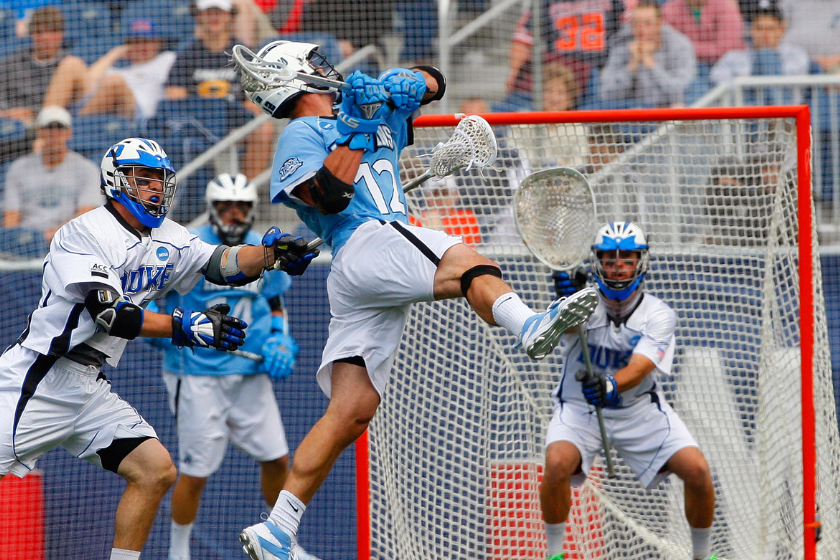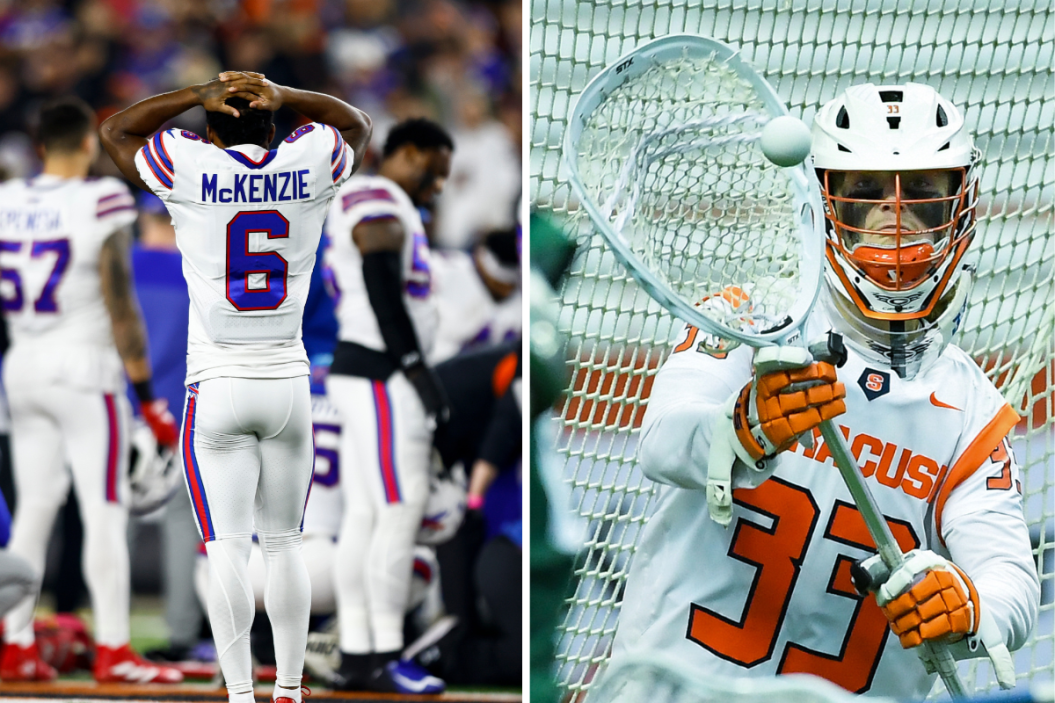Last year, millions of NFL fans woke up in a state of disbelief following the Monday Night Football matchup between the Buffalo Bills and Cincinnati Bengals. It wasn't an insane circus catch or a long, game-winning field goal that had their stomach in knots. Instead, it was the image of Bills safety Damar Hamlin collapsing on the field following what looked to be a regular, routine play. Hamlin stood up after the play, then wavered and fell to the turf — and lacrosse players around the country may have sensed what occurred. Now, after Hamlin has been cleared to play football again, the Bills safety revealed that Commotio cordis was to blame for his scary, life-altering incident.
Videos by FanBuzz
What is Commotio Cordis?

Photo by Dylan Buell/Getty Images
Commotio cordis is a disruption of the heart rhythm as a result of sudden, blunt impact to the chest. That impact can cause sudden death even in the absence of cardiac damage. This condition was first described in the middle of the 18th century in the context of chest trauma among workers. According to the American Heart Association, commotio cordis events have risen over the last 30 years, primarily due to their occurrence in sports — which is why the phenomenon has become more well known to the sports communities and to physicians.
When Hamlin went down after what looked to be a routine hit on Cincinnati Bengals wideout Tee Higgins, NFL fans may have initially thought the Pittsburgh native had suffered a concussion. However, viewers who are well versed in a different sport may have suspected something worse was wrong. Lacrosse players know about it all too well.
Lacrosse Players Understand the Risk of Taking a Shot to the Chest

Photo by Jim Rogash/Getty Images
The National Operating Committee on Standards for Athletic Equipment's website states that between 15 and 25 athletes die from commotio cordis every year, the majority of whom are under the age of 18. In lacrosse, the position in the most danger is commonly the goalie, whose main job is to stop high-speed shots on net. US Lacrosse has taken steps to prevent sudden-death events in the sport by passing multiple requirements for chest protectors and shoulder pads, but tragedies still happen every year.
In 1999, UMass lacrosse player Eric Sopracasa died after being struck by a lacrosse ball in the chest. In Northport, New York, Louis J. Acompora, a 14-year-old goalie, died after a shot hit him in the chest. In 2004, George Boiardi, a senior at Cornell University, died after being struck in the chest with a shot. In 2014, Tyler Kopp, who was only 12 years old, died after a lacrosse ball struck him and stopped his heart. These tragic accidents sparked change in the lacrosse community and led to better understanding not only of the dangers but also of the solutions.
Automatic external defibrillators — or AEDs — have saved lives in recent years when used on players in cardiac arrest. For Loyola Blakefield lacrosse player Peter Laake of Towson, Maryland, his life was saved by coaches springing into action after he took a shot to the chest.
"I remember getting hit. And then I remember looking to where the ball was at the moment because the ball had bounced back into his stick, and he passed it somewhere," Laake said after the incident. "So I remember looking for the ball, and then I just remember getting very dizzy and blacking out. And then I remember waking up."
"When I came up to him I tried to determine his alertness and awareness and level of consciousness ... he wasn't responding to anything that I was asking for," remembered Loyola Blakefield's trainer, Jeremy Parr. "He didn't appear to be breathing on his own. It was more like a gasping reflex. And then I couldn't find a pulse." An AED saved Peter's life.
Carron Laake, Peter's mother, was worried sick during the ordeal. "I just kept thinking, 'He'll be fine.' And then, you know, 10 seconds later, I was in a complete frenzy that he's not going to make it."
Damar Hamlin on his return: https://t.co/3F93PuqhHN pic.twitter.com/MFSKHyxE8X
— Alaina Getzenberg (@agetzenberg) April 18, 2023
Almost exactly two years before Hamlin collapsed, US Lacrosse required all players, not just goalies, to wear an added protecting shield on their chest protectors. "When you think of all the elements that need to be in place to ensure a positive outcome from a hit from a ball to the chest, it's CPR-trained adults, it's an athletic trainer medical personnel, it's an AED on site that is accessible to the field with working batteries, and it's protective equipment. That is really the environment we need," said Ann Kitt Carpenetti, US Lacrosse vice president of lacrosse operations.
All that said, commotio cordis is a "one-in-a-million" incident that can change everything in a second. As we all saw in Cincinnati on that Monday night, time can stop. The only thing you can hope for is a medical staff that knows how to handle such a situation. After that, what you need is a miracle.
